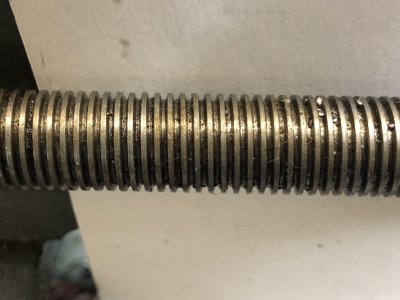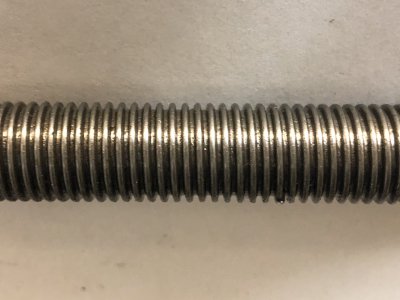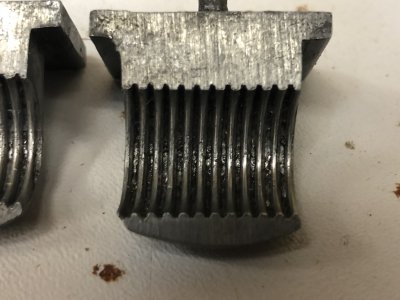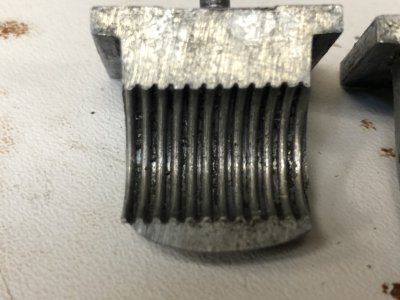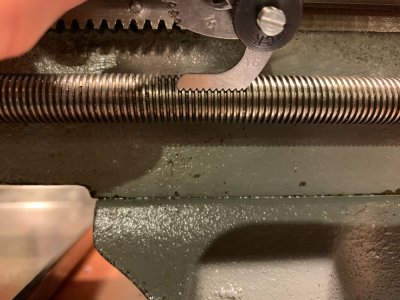Hi, I’ve finally got back to working on my Craftsman 101.20140 lathe I got last year. So far I have had to replace the cross feed nut and the pinion gear on the rack. I also added a QCTP to replace the broken lantern and I’m quite happy with how it’s working.
I had noticed it was cutting a taper so I attempted to level the lathe last night. I don’t have a machinist level so I did a few test cuts on a 12” bar and was working back and forth to see if I could get the cuts the same. After realizing the tail stock was way out of alignment I was able to get it to about 0.002” which I was happy with given my method.
When I went to take a pass along the whole bar with the power feed the half nuts started “skipping” in the middle. I’m not sure if that’s the right term but it’s like the are crawling up and over the threads on the lead screw.
When I got the lathe, the half nuts wouldn’t hold the screw at all. I shimmed them a little between the back of the carriage and the nuts and this seemed to help but I was assuming it was a temporary fix. The lead screw threads don’t look pointy but they are not square either. I have cleaned the nuts and the lead screw and picked out all the debris. Given the number of odd things when I got the lathe I wouldn’t be surprised if the previous owner had used the half wheel with the half nuts engaged.
My question is about what my next steps would be. I had got a quote a year ago from Clausing and the lead screw is about $150 and the half nuts are $50. I’m in Canada so the shipping will be steep and I prefer to try and minimize the number of orders. I am planning on keeping the lathe long term as it is the appropriate for the small work I do so I don’t mind putting some money into it.
Is it likely just the half nuts are worn?
Should I just bite the bullet and replace both?
With a worn lead screw ware out new half nuts quickly?
I had noticed it was cutting a taper so I attempted to level the lathe last night. I don’t have a machinist level so I did a few test cuts on a 12” bar and was working back and forth to see if I could get the cuts the same. After realizing the tail stock was way out of alignment I was able to get it to about 0.002” which I was happy with given my method.
When I went to take a pass along the whole bar with the power feed the half nuts started “skipping” in the middle. I’m not sure if that’s the right term but it’s like the are crawling up and over the threads on the lead screw.
When I got the lathe, the half nuts wouldn’t hold the screw at all. I shimmed them a little between the back of the carriage and the nuts and this seemed to help but I was assuming it was a temporary fix. The lead screw threads don’t look pointy but they are not square either. I have cleaned the nuts and the lead screw and picked out all the debris. Given the number of odd things when I got the lathe I wouldn’t be surprised if the previous owner had used the half wheel with the half nuts engaged.
My question is about what my next steps would be. I had got a quote a year ago from Clausing and the lead screw is about $150 and the half nuts are $50. I’m in Canada so the shipping will be steep and I prefer to try and minimize the number of orders. I am planning on keeping the lathe long term as it is the appropriate for the small work I do so I don’t mind putting some money into it.
Is it likely just the half nuts are worn?
Should I just bite the bullet and replace both?
With a worn lead screw ware out new half nuts quickly?


